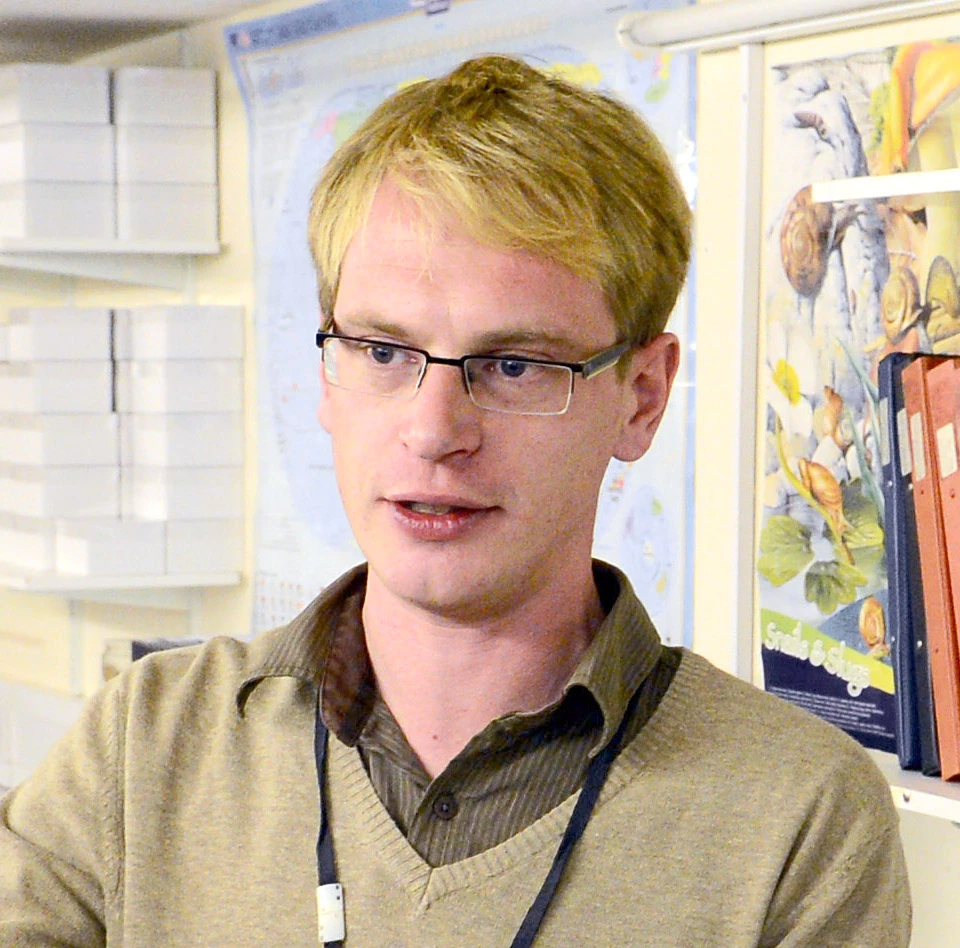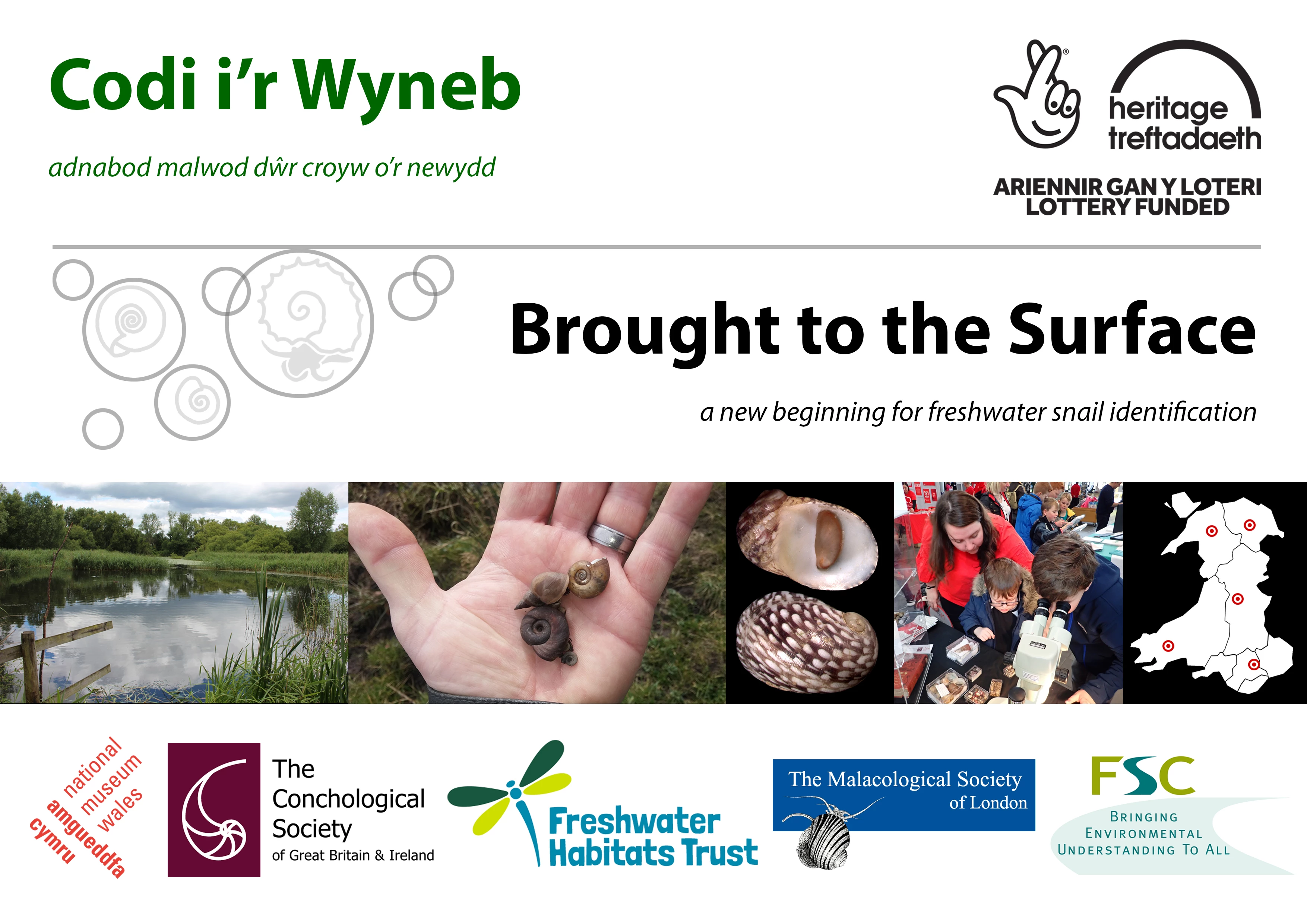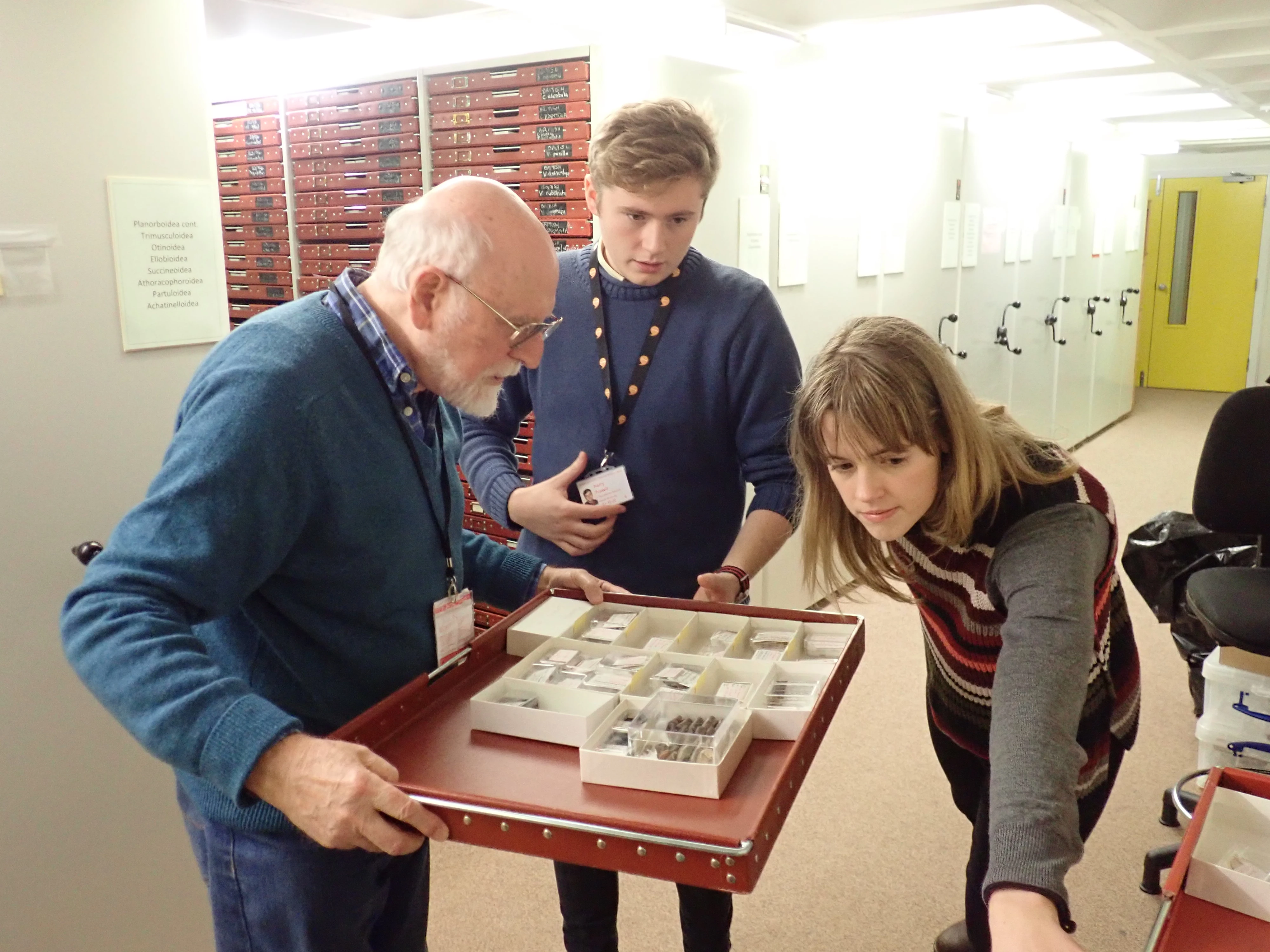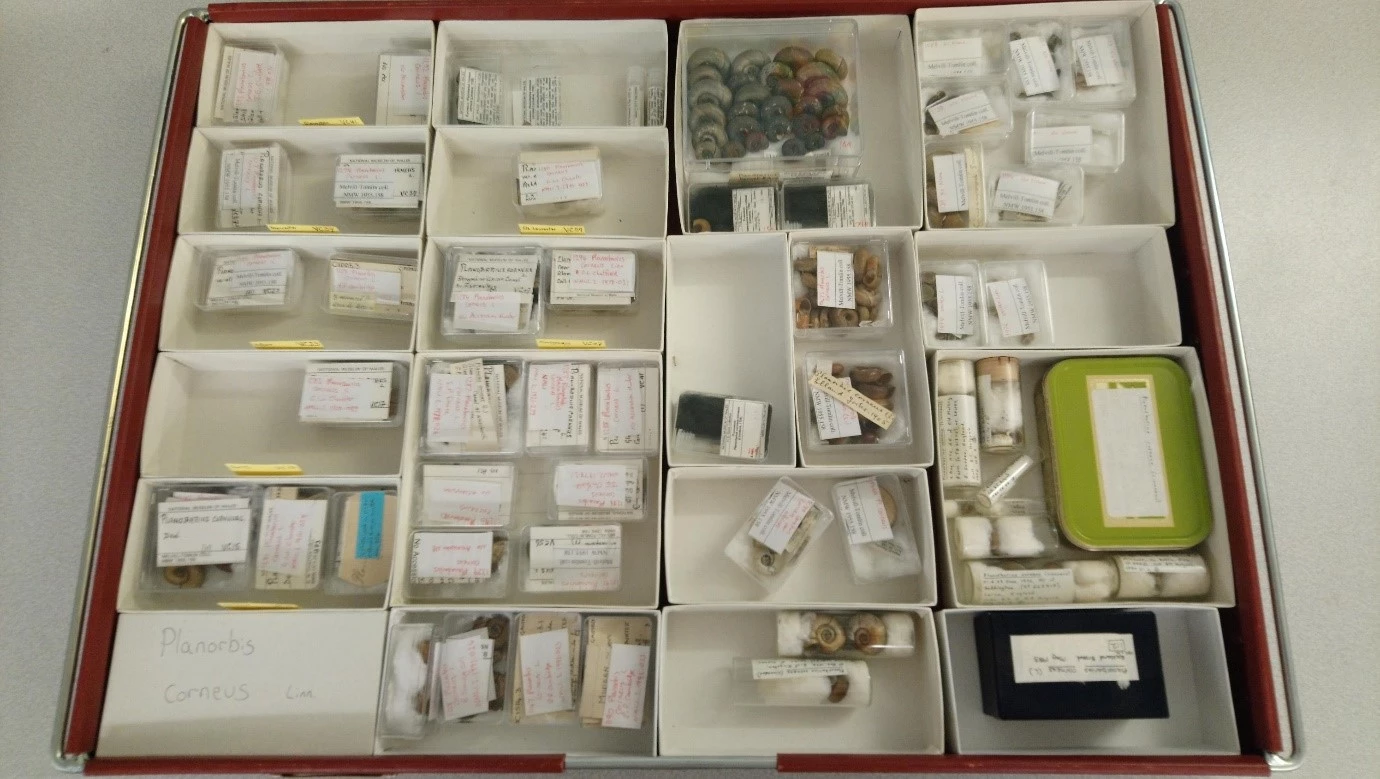Shells at the source of “Brought to the Surface”
, 22 Ionawr 2019
Every river has its source, starting small then gathering pace. Our project on freshwater snails is doing just that as we tumble into 2019. “Codi i’r Wyneb – Brought to the Surface is a 2-year project to create a new guide to the freshwater snails of Britain and Ireland, supported by the National Lottery through the Heritage Lottery Fund. Where better to begin than with Amgueddfa Cymru’s world class Mollusca collections?
This month we are joined by three new faces: our Project Officer, Harry Powell, and volunteers Jelena Nefjodova and Mike Tynen. Harry studied biology and ecology at Plymouth University, and is a former volunteer here himself. Mike spent many years with the Cheshire Wildlife Trust and Jelena is a current student at Cardiff University. All four of us have gotten stuck in to the snail collections here, of which we’ll say more in a moment.
To date over 1000 other people, and several organisations, have already engaged with Brought to the Surface. Our travelling display was especially popular at Swansea Science Festival in November 2018, where many members of the public took the chance to get up close (up to 50X magnification!) with British and foreign freshwater snails on our stand. We also showcased specimens at two conferences at the Museum, Unknown Wales (Wildlife Trust of South and West Wales) and at the Wales Biodiversity Partnership.
These displays will evolve as the project does, but also on the way is a more permanent exhibit at the Museum, now in the design stages. This gives us an excuse to feature a photo by our partner Hannah Shaw, of the magnificent Llangloffan Fen near Fishguard, Pembrokeshire. We’ve been looking for a lush landscape, captured in summer, to make a good backdrop for the display. It’s also a reminder that, having passed the solstice, outdoor snail activities are not too far away.
Summer will also bring our series of “Snail Day” training and key testing events around Wales. Our partner Mike Dobson has been especially quick of the mark in helping draft a comprehensive key to try out with the public at these. We are fortunate in having such a range of snail specimens from the Museum to use in these activities, but it will also be fun for people to have a go at finding and identifying their own. After all, the ideal key is one that should allow a total beginner to identify the very first snail they find…
And so back to the collections, the foundation of this kind of biology and a unique asset of museums. Harry, Mike and Jelena have been helping review and curate what we already have, and others have kindly been sending specimens from England, Scotland and Northern Ireland for our project. Particular thanks to our partner Martin Willing from the Conchological Society, who is hot on the trail of Britain’s more obscure freshwater snail species. Our Twitter account @CardiffCurator will feature many of these over the next couple of years with the hashtag #FreshwaterSnailoftheFortnight. The photos, descriptions and DNA sequences from 150 years’ worth of snail study will all be the basis for our eventual Field Studies Council publication.
We’ll report again as more people, places and snails join us on our journey.





